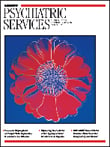Controversial Therapies for Developmental Disabilities: Fad, Fashion, and Science in Professional Practice
Scholars know that they must present information in carefully measured, objective, academic prose. But sometimes, an academic has to let loose, chuck all the pretense of objectivity, and tell people what he or she really thinks. The contributors in this volume have done just that.
Thirty-two authors from the fields of psychology, law, and education have written 28 chapters on a variety of approaches to the treatment of children and adults with developmental disabilities. They point out logical inconsistencies in the use of mainstreaming as a panacea for all disabilities. Why, for example, would we expect a general education teacher or a second grade classmate to do a better job of teaching reading to a child who is cognitively impaired than a special education teacher who offers "the intensive, focused, relentless instruction that many children with disabilities require if they are able to make reasonable progress?" And how can they do that while still doing justice to the regular education curriculum?
Separate articles attack sensory integration therapy, facilitated communication, and the whole-language approach to teaching reading. Authors assert that there is no evidence that these therapies work. A chapter on person-centered planning describes the committee as a "Ouija Board" and the procedure as a mushy way of making both the patient and the planners on the team feel good about the process, despite the lack of measurable goals and evidence-based procedures to reach those goals.
One of the most informative chapters was written by an attorney. Parents who want their children to receive the services of a professional skilled in applied behavior analysis can make two arguments in court: failure to use a scientifically proven treatment constitutes negligence, and it is malpractice for an organization to choose ideology over science in order to utilize methods that are still considered experimental without obtaining informed consent and advising parents about proven treatment methods.
Another interesting chapter describes the origin and appeal of some of the current fads. "The processes by which behavior analysis works are slow and methodical, difficult and expensive, empirical rather than values based, not at all as dramatic and fun as exotic machines and cheerful dolphins, and rarely result in claims of instant breakthroughs, miracles, or cures."
The underlying assumption, repeated endlessly throughout the book, is that the methods of applied behavior analysis and similar carefully structured approaches with well-defined steps and measurable goals are far superior to any other treatment approaches. However, the authors are guilty of the same sins for which they criticize others. They do not provide a description of applied behavior analysis and the evidence for its efficacy, let alone its superiority to other methods. The authors criticize the whole-language approach to teaching beginners to read but do not describe the evidence that phonics-based approaches are superior—even though there is an abundance of such evidence.
I enjoyed this book because I share many of the same biases and can imagine how cathartic it was for the authors to ventilate their frustrations. I now have new ways to articulate some of my views the next time I go to an Individual Education Program committee at a school. However, parents and professionals who are seeking to explain and justify the need for their child to receive the services of a skilled behavior analyst; structured, phonics-based reading instruction; or speech therapy with targeted practice of specific words, grammatical forms, and pragmatic rules need to come to the meeting with a detailed and specific description of the services their child needs and solid evidence to support their requests. This book does not give them that.



